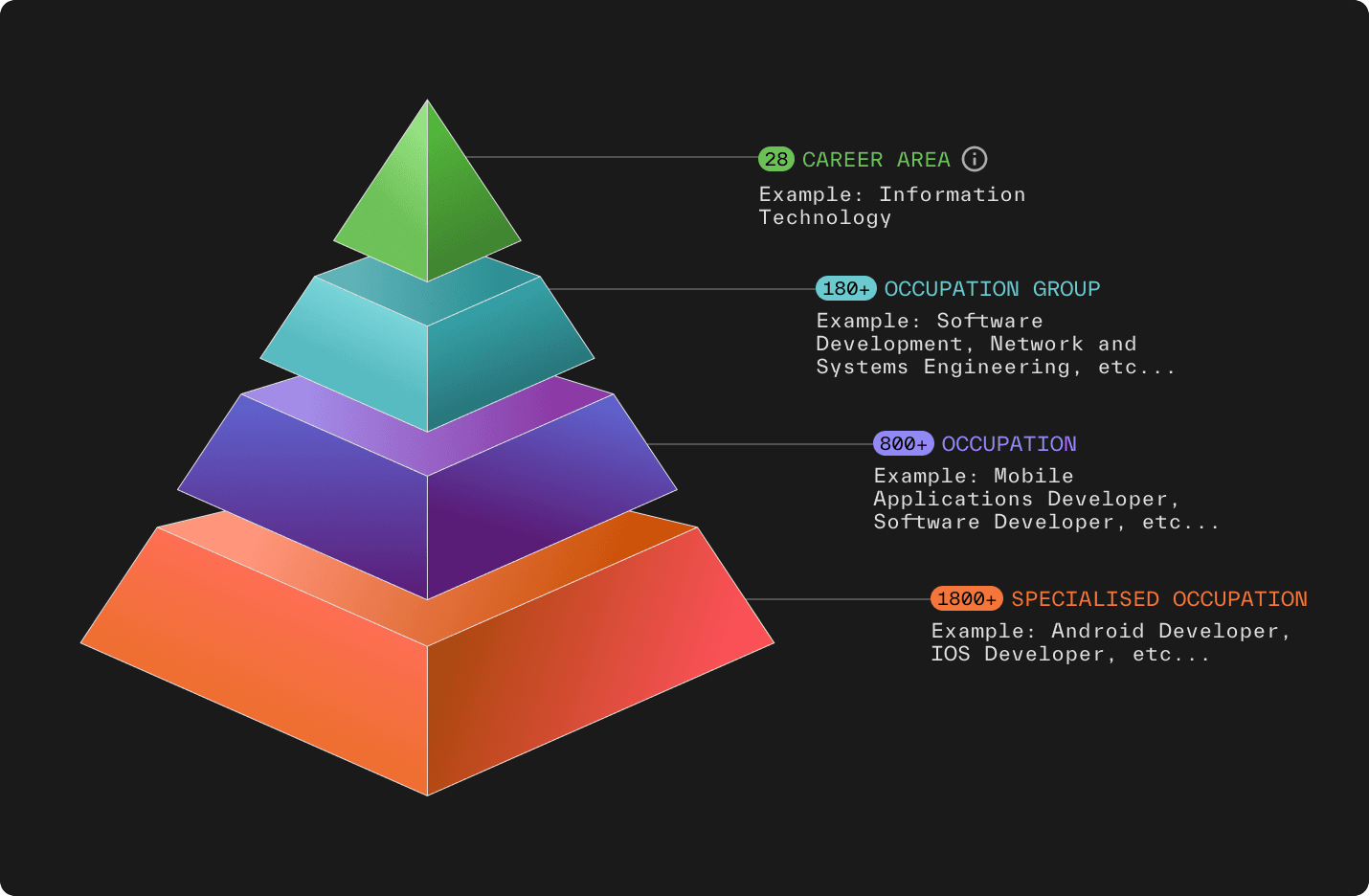Lightcast Occupations Taxonomy
Occupation
Related Occupations
(How does Lightcast define an occupation?)Browse the most common related occupations, based on the last 5 months of job postings data
A Registered Nurse provides medical care and treatment, educates patients about their conditions, and provides emotional support to patients and families. Works in hospitals, schools, clinics or community health centers. Works under the supervision of a physician or other specialist, and serves as the primary point of care for patients in a hospital setting. May specialize in emergency room work, or treatment for a particular condition, or specialize in working with infants, the elderly or other patient groups. May work as an advanced practice specialists and prescribe medications in addition to offering specialty care.
A Caregiver or Personal Care Aide provides non-medical care for adults, including elderly and disabled people, typically in their own homes. Assists clients with daily tasks including bathing, medication reminders, and light housekeeping; may also provide transportation for appointments and errands. These roles do not always require formal certification.
A Waiter or Waitress takes orders and serves food and beverages to customers in restaurants. Answers customer questions about menu items, prepares checks and collects payment, and assists with clearing dishes and tables. May work in banquet or dining halls.
A Retail Sales Associate sells merchandise or products in a retail store. Provides information about store merchandise, assists customers with finding items and encourages sales.
A Building and General Maintenance Technician performs building maintenance and appliance repairs for an apartment complex, housing division, residential center or business, as directed by a property manager.

As we move up in the hierarchy, subsections are exclusive to their associated category. In other words, each specialized occupation is unique to its occupation, each occupation is unique to its occupation group, and each occupation group is unique to its career area. This prevents duplicate or overlapping data when analyzing more than one occupation.
The LOT uses a proprietary classification system of four different levels: career areas, occupation groups, occupations, and specialized occupations.
